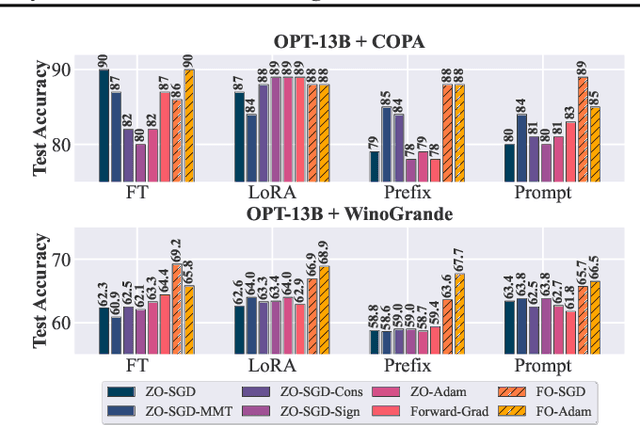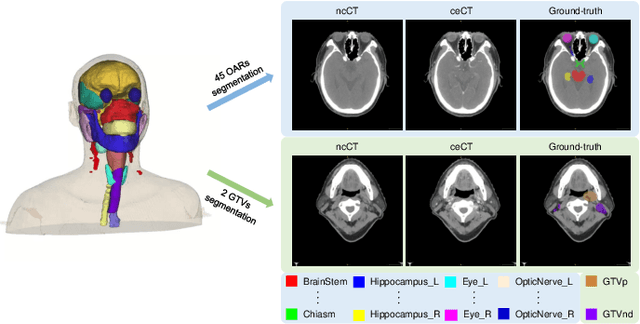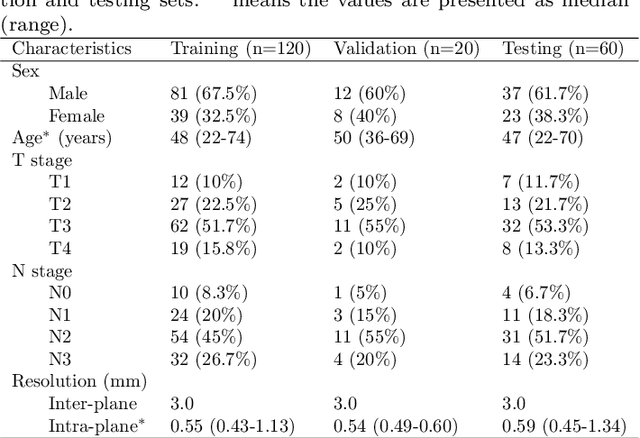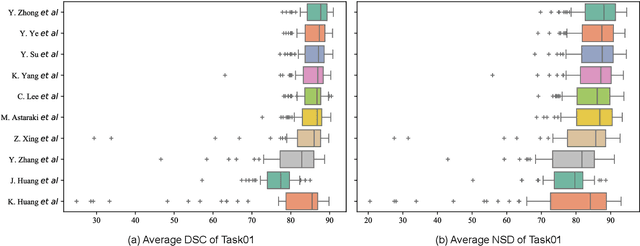Yimeng Zhang
The Dual Power of Interpretable Token Embeddings: Jailbreaking Attacks and Defenses for Diffusion Model Unlearning
Apr 30, 2025Abstract:Despite the remarkable generalization capabilities of diffusion models, recent studies have shown that these models can memorize and generate harmful content when prompted with specific text instructions. Although fine-tuning approaches have been developed to mitigate this issue by unlearning harmful concepts, these methods can be easily circumvented through jailbreaking attacks. This indicates that the harmful concept has not been fully erased from the model. However, existing attack methods, while effective, lack interpretability regarding why unlearned models still retain the concept, thereby hindering the development of defense strategies. In this work, we address these limitations by proposing an attack method that learns an orthogonal set of interpretable attack token embeddings. The attack token embeddings can be decomposed into human-interpretable textual elements, revealing that unlearned models still retain the target concept through implicit textual components. Furthermore, these attack token embeddings are robust and transferable across text prompts, initial noises, and unlearned models. Finally, leveraging this diverse set of embeddings, we design a defense method applicable to both our proposed attack and existing attack methods. Experimental results demonstrate the effectiveness of both our attack and defense strategies.
Can Large Language Models Understand You Better? An MBTI Personality Detection Dataset Aligned with Population Traits
Dec 17, 2024Abstract:The Myers-Briggs Type Indicator (MBTI) is one of the most influential personality theories reflecting individual differences in thinking, feeling, and behaving. MBTI personality detection has garnered considerable research interest and has evolved significantly over the years. However, this task tends to be overly optimistic, as it currently does not align well with the natural distribution of population personality traits. Specifically, (1) the self-reported labels in existing datasets result in incorrect labeling issues, and (2) the hard labels fail to capture the full range of population personality distributions. In this paper, we optimize the task by constructing MBTIBench, the first manually annotated high-quality MBTI personality detection dataset with soft labels, under the guidance of psychologists. As for the first challenge, MBTIBench effectively solves the incorrect labeling issues, which account for 29.58% of the data. As for the second challenge, we estimate soft labels by deriving the polarity tendency of samples. The obtained soft labels confirm that there are more people with non-extreme personality traits. Experimental results not only highlight the polarized predictions and biases in LLMs as key directions for future research, but also confirm that soft labels can provide more benefits to other psychological tasks than hard labels. The code and data are available at https://github.com/Personality-NLP/MbtiBench.
ID-Patch: Robust ID Association for Group Photo Personalization
Nov 20, 2024Abstract:The ability to synthesize personalized group photos and specify the positions of each identity offers immense creative potential. While such imagery can be visually appealing, it presents significant challenges for existing technologies. A persistent issue is identity (ID) leakage, where injected facial features interfere with one another, resulting in low face resemblance, incorrect positioning, and visual artifacts. Existing methods suffer from limitations such as the reliance on segmentation models, increased runtime, or a high probability of ID leakage. To address these challenges, we propose ID-Patch, a novel method that provides robust association between identities and 2D positions. Our approach generates an ID patch and ID embeddings from the same facial features: the ID patch is positioned on the conditional image for precise spatial control, while the ID embeddings integrate with text embeddings to ensure high resemblance. Experimental results demonstrate that ID-Patch surpasses baseline methods across metrics, such as face ID resemblance, ID-position association accuracy, and generation efficiency. Project Page is: https://byteaigc.github.io/ID-Patch/
Multi-Source EEG Emotion Recognition via Dynamic Contrastive Domain Adaptation
Aug 04, 2024



Abstract:Electroencephalography (EEG) provides reliable indications of human cognition and mental states. Accurate emotion recognition from EEG remains challenging due to signal variations among individuals and across measurement sessions. To address these challenges, we introduce a multi-source dynamic contrastive domain adaptation method (MS-DCDA), which models coarse-grained inter-domain and fine-grained intra-class adaptations through a multi-branch contrastive neural network and contrastive sub-domain discrepancy learning. Our model leverages domain knowledge from each individual source and a complementary source ensemble and uses dynamically weighted learning to achieve an optimal tradeoff between domain transferability and discriminability. The proposed MS-DCDA model was evaluated using the SEED and SEED-IV datasets, achieving respectively the highest mean accuracies of $90.84\%$ and $78.49\%$ in cross-subject experiments as well as $95.82\%$ and $82.25\%$ in cross-session experiments. Our model outperforms several alternative domain adaptation methods in recognition accuracy, inter-class margin, and intra-class compactness. Our study also suggests greater emotional sensitivity in the frontal and parietal brain lobes, providing insights for mental health interventions, personalized medicine, and development of preventive strategies.
Defensive Unlearning with Adversarial Training for Robust Concept Erasure in Diffusion Models
May 24, 2024Abstract:Diffusion models (DMs) have achieved remarkable success in text-to-image generation, but they also pose safety risks, such as the potential generation of harmful content and copyright violations. The techniques of machine unlearning, also known as concept erasing, have been developed to address these risks. However, these techniques remain vulnerable to adversarial prompt attacks, which can prompt DMs post-unlearning to regenerate undesired images containing concepts (such as nudity) meant to be erased. This work aims to enhance the robustness of concept erasing by integrating the principle of adversarial training (AT) into machine unlearning, resulting in the robust unlearning framework referred to as AdvUnlearn. However, achieving this effectively and efficiently is highly nontrivial. First, we find that a straightforward implementation of AT compromises DMs' image generation quality post-unlearning. To address this, we develop a utility-retaining regularization on an additional retain set, optimizing the trade-off between concept erasure robustness and model utility in AdvUnlearn. Moreover, we identify the text encoder as a more suitable module for robustification compared to UNet, ensuring unlearning effectiveness. And the acquired text encoder can serve as a plug-and-play robust unlearner for various DM types. Empirically, we perform extensive experiments to demonstrate the robustness advantage of AdvUnlearn across various DM unlearning scenarios, including the erasure of nudity, objects, and style concepts. In addition to robustness, AdvUnlearn also achieves a balanced tradeoff with model utility. To our knowledge, this is the first work to systematically explore robust DM unlearning through AT, setting it apart from existing methods that overlook robustness in concept erasing. Codes are available at: https://github.com/OPTML-Group/AdvUnlearn
SOUL: Unlocking the Power of Second-Order Optimization for LLM Unlearning
Apr 28, 2024



Abstract:Large Language Models (LLMs) have highlighted the necessity of effective unlearning mechanisms to comply with data regulations and ethical AI practices. LLM unlearning aims at removing undesired data influences and associated model capabilities without compromising utility out of the scope of unlearning. While interest in studying LLM unlearning is growing,the impact of the optimizer choice for LLM unlearning remains under-explored. In this work, we shed light on the significance of optimizer selection in LLM unlearning for the first time, establishing a clear connection between {second-order optimization} and influence unlearning (a classical approach using influence functions to update the model for data influence removal). This insight propels us to develop a second-order unlearning framework, termed SOUL, built upon the second-order clipped stochastic optimization (Sophia)-based LLM training method. SOUL extends the static, one-shot model update using influence unlearning to a dynamic, iterative unlearning process. Our extensive experiments show that SOUL consistently outperforms conventional first-order methods across various unlearning tasks, models, and metrics, suggesting the promise of second-order optimization in providing a scalable and easily implementable solution for LLM unlearning.
The Power of Few: Accelerating and Enhancing Data Reweighting with Coreset Selection
Mar 20, 2024



Abstract:As machine learning tasks continue to evolve, the trend has been to gather larger datasets and train increasingly larger models. While this has led to advancements in accuracy, it has also escalated computational costs to unsustainable levels. Addressing this, our work aims to strike a delicate balance between computational efficiency and model accuracy, a persisting challenge in the field. We introduce a novel method that employs core subset selection for reweighting, effectively optimizing both computational time and model performance. By focusing on a strategically selected coreset, our approach offers a robust representation, as it efficiently minimizes the influence of outliers. The re-calibrated weights are then mapped back to and propagated across the entire dataset. Our experimental results substantiate the effectiveness of this approach, underscoring its potential as a scalable and precise solution for model training.
UnlearnCanvas: A Stylized Image Dataset to Benchmark Machine Unlearning for Diffusion Models
Feb 26, 2024Abstract:The rapid advancement of diffusion models (DMs) has not only transformed various real-world industries but has also introduced negative societal concerns, including the generation of harmful content, copyright disputes, and the rise of stereotypes and biases. To mitigate these issues, machine unlearning (MU) has emerged as a potential solution, demonstrating its ability to remove undesired generative capabilities of DMs in various applications. However, by examining existing MU evaluation methods, we uncover several key challenges that can result in incomplete, inaccurate, or biased evaluations for MU in DMs. To address them, we enhance the evaluation metrics for MU, including the introduction of an often-overlooked retainability measurement for DMs post-unlearning. Additionally, we introduce UnlearnCanvas, a comprehensive high-resolution stylized image dataset that facilitates us to evaluate the unlearning of artistic painting styles in conjunction with associated image objects. We show that this dataset plays a pivotal role in establishing a standardized and automated evaluation framework for MU techniques on DMs, featuring 7 quantitative metrics to address various aspects of unlearning effectiveness. Through extensive experiments, we benchmark 5 state-of-the-art MU methods, revealing novel insights into their pros and cons, and the underlying unlearning mechanisms. Furthermore, we demonstrate the potential of UnlearnCanvas to benchmark other generative modeling tasks, such as style transfer. The UnlearnCanvas dataset, benchmark, and the codes to reproduce all the results in this work can be found at https://github.com/OPTML-Group/UnlearnCanvas.
Revisiting Zeroth-Order Optimization for Memory-Efficient LLM Fine-Tuning: A Benchmark
Feb 26, 2024



Abstract:In the evolving landscape of natural language processing (NLP), fine-tuning pre-trained Large Language Models (LLMs) with first-order (FO) optimizers like SGD and Adam has become standard. Yet, as LLMs grow {in size}, the substantial memory overhead from back-propagation (BP) for FO gradient computation presents a significant challenge. Addressing this issue is crucial, especially for applications like on-device training where memory efficiency is paramount. This paper proposes a shift towards BP-free, zeroth-order (ZO) optimization as a solution for reducing memory costs during LLM fine-tuning, building on the initial concept introduced by MeZO. Unlike traditional ZO-SGD methods, our work expands the exploration to a wider array of ZO optimization techniques, through a comprehensive, first-of-its-kind benchmarking study across five LLM families (Roberta, OPT, LLaMA, Vicuna, Mistral), three task complexities, and five fine-tuning schemes. Our study unveils previously overlooked optimization principles, highlighting the importance of task alignment, the role of the forward gradient method, and the balance between algorithm complexity and fine-tuning performance. We further introduce novel enhancements to ZO optimization, including block-wise descent, hybrid training, and gradient sparsity. Our study offers a promising direction for achieving further memory-efficient LLM fine-tuning. Codes to reproduce all our experiments are at https://github.com/ZO-Bench/ZO-LLM .
SegRap2023: A Benchmark of Organs-at-Risk and Gross Tumor Volume Segmentation for Radiotherapy Planning of Nasopharyngeal Carcinoma
Dec 15, 2023



Abstract:Radiation therapy is a primary and effective NasoPharyngeal Carcinoma (NPC) treatment strategy. The precise delineation of Gross Tumor Volumes (GTVs) and Organs-At-Risk (OARs) is crucial in radiation treatment, directly impacting patient prognosis. Previously, the delineation of GTVs and OARs was performed by experienced radiation oncologists. Recently, deep learning has achieved promising results in many medical image segmentation tasks. However, for NPC OARs and GTVs segmentation, few public datasets are available for model development and evaluation. To alleviate this problem, the SegRap2023 challenge was organized in conjunction with MICCAI2023 and presented a large-scale benchmark for OAR and GTV segmentation with 400 Computed Tomography (CT) scans from 200 NPC patients, each with a pair of pre-aligned non-contrast and contrast-enhanced CT scans. The challenge's goal was to segment 45 OARs and 2 GTVs from the paired CT scans. In this paper, we detail the challenge and analyze the solutions of all participants. The average Dice similarity coefficient scores for all submissions ranged from 76.68\% to 86.70\%, and 70.42\% to 73.44\% for OARs and GTVs, respectively. We conclude that the segmentation of large-size OARs is well-addressed, and more efforts are needed for GTVs and small-size or thin-structure OARs. The benchmark will remain publicly available here: https://segrap2023.grand-challenge.org
 Add to Chrome
Add to Chrome Add to Firefox
Add to Firefox Add to Edge
Add to Edge